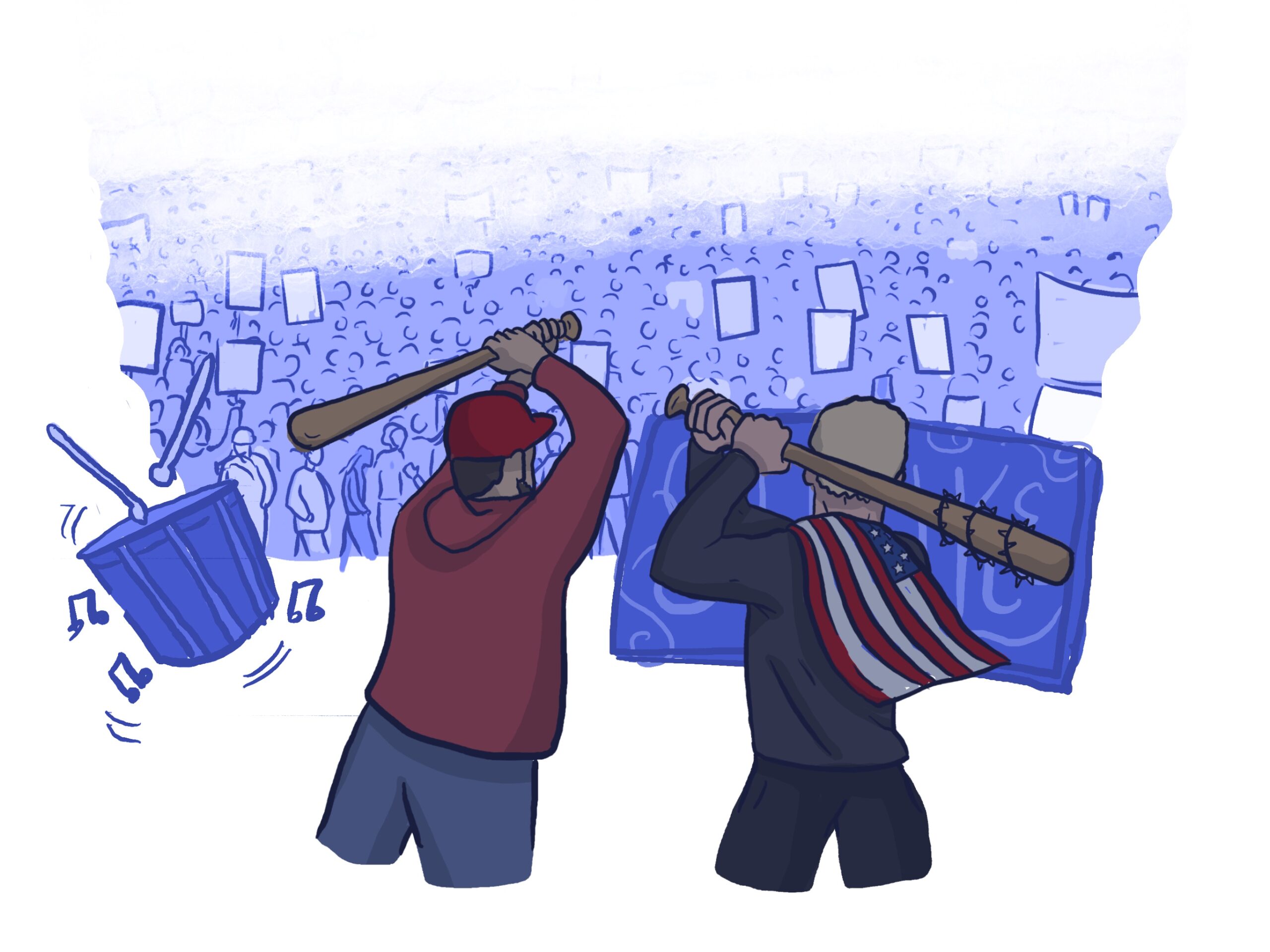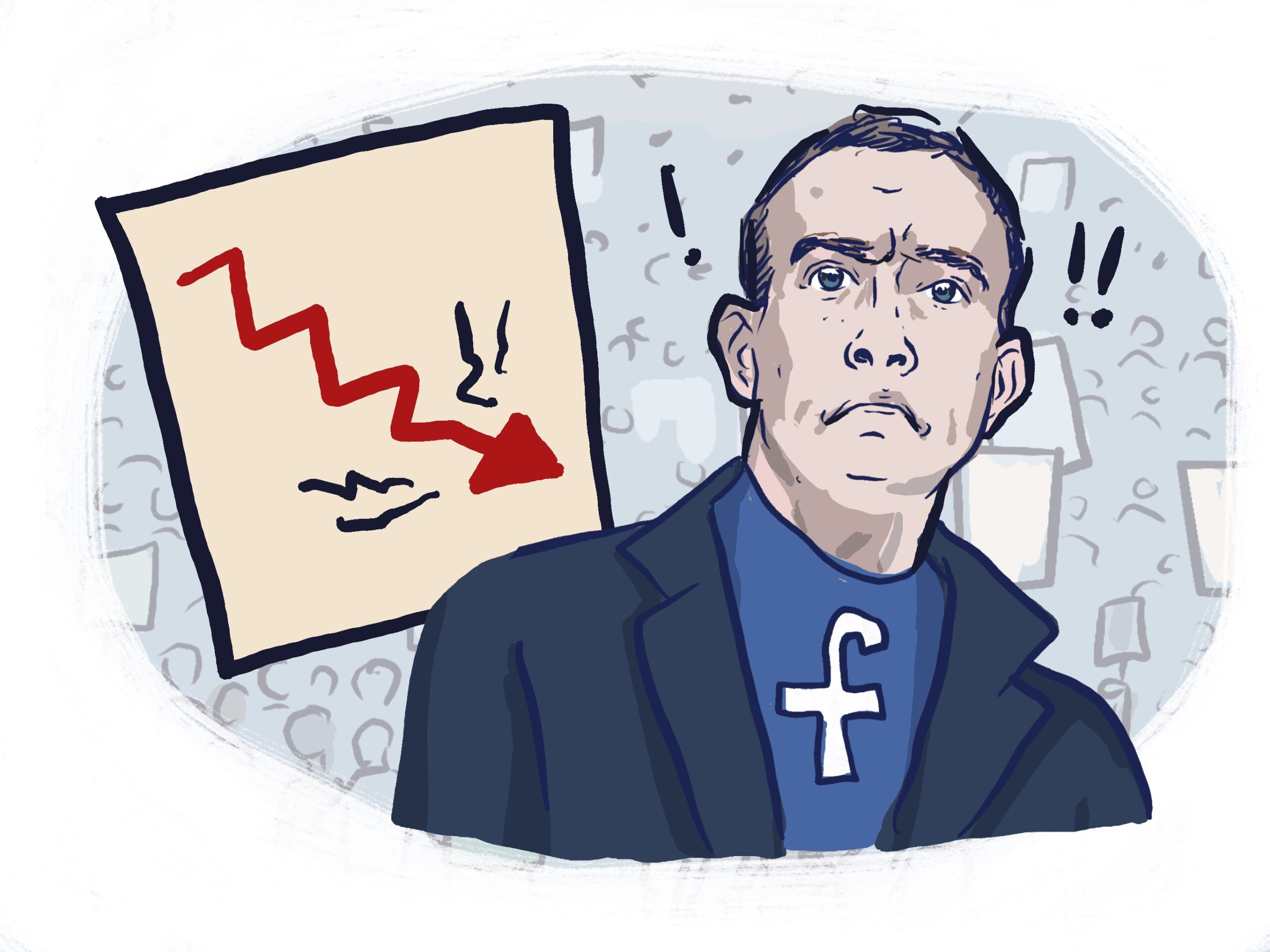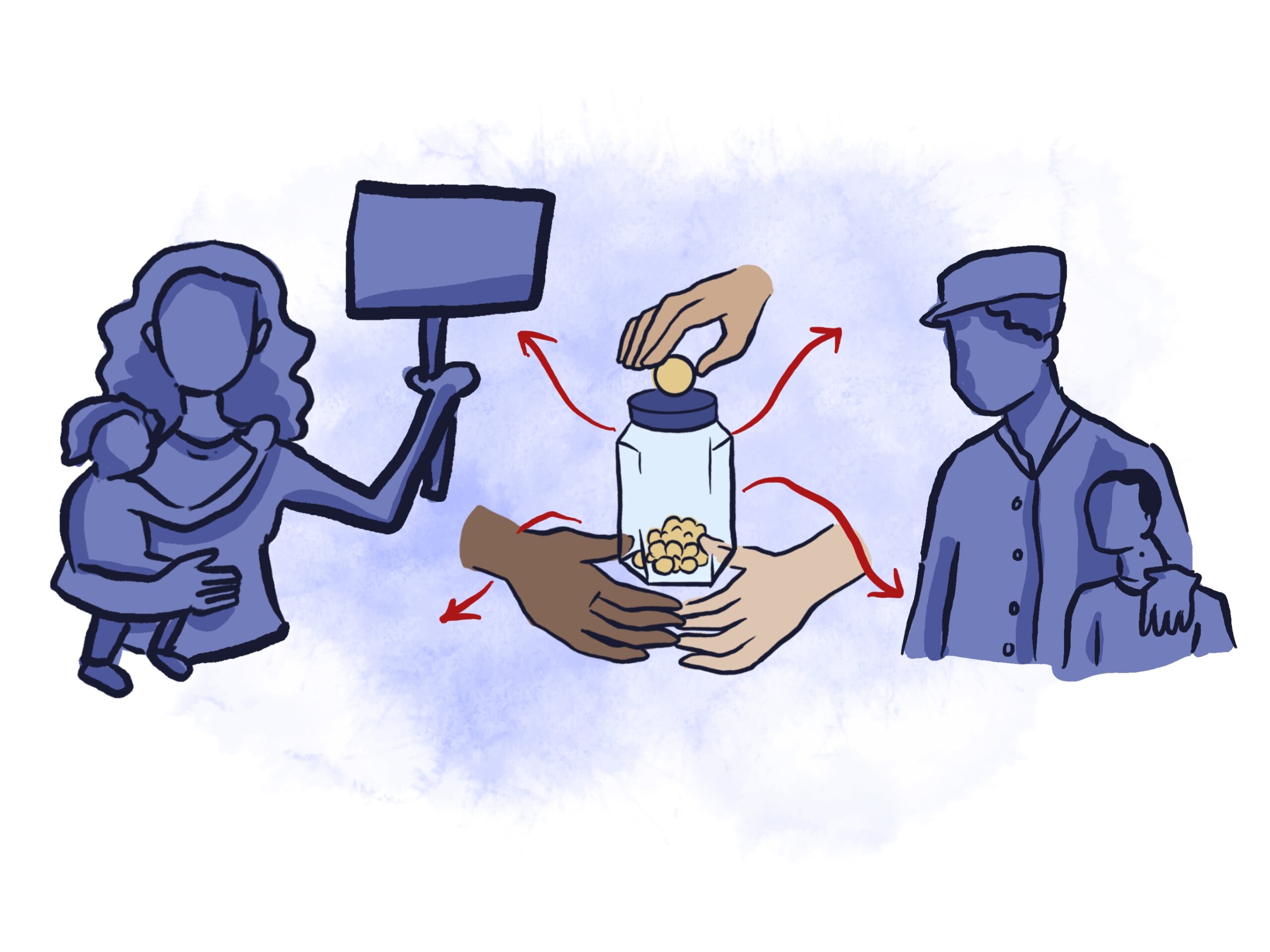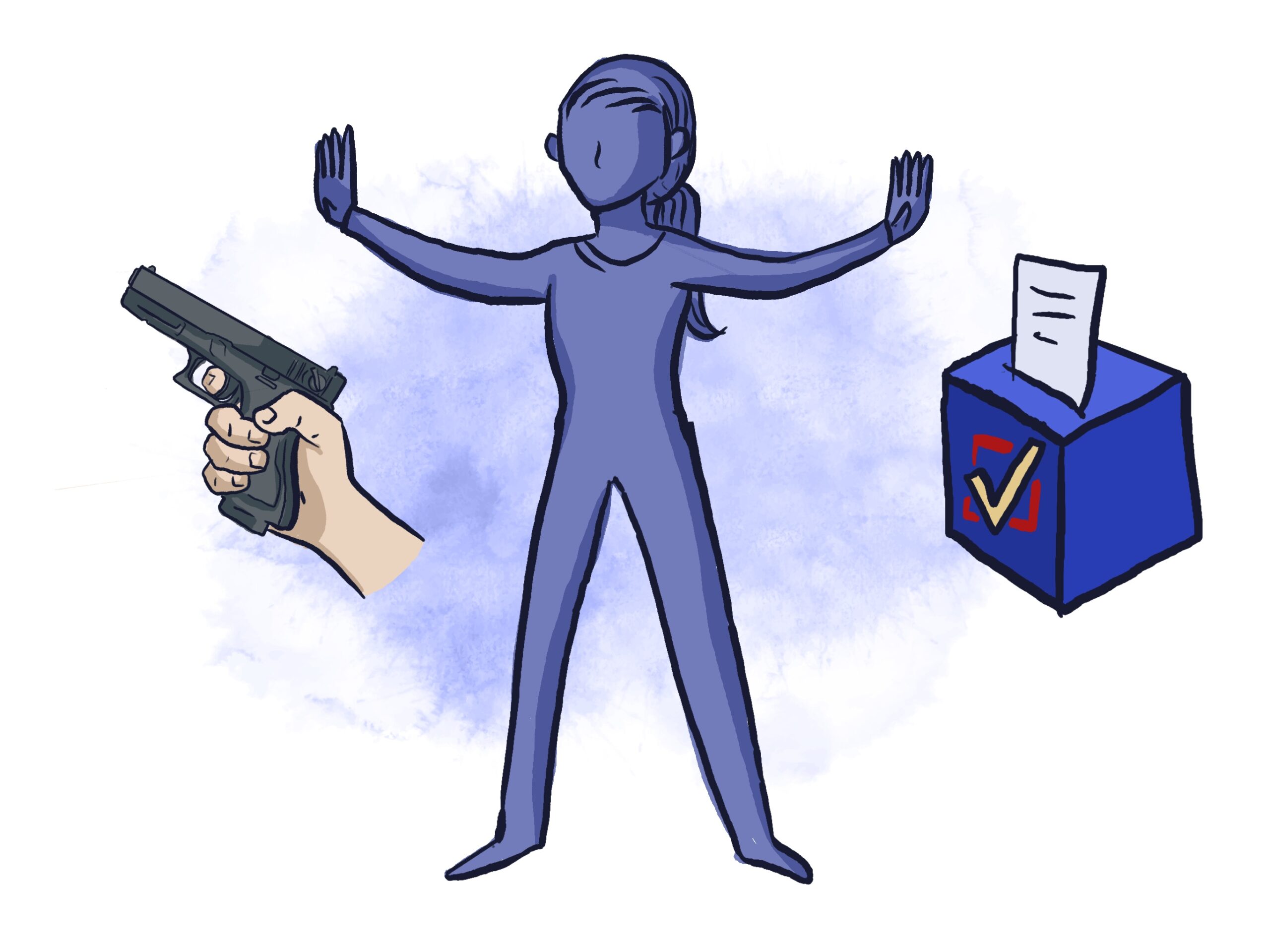Buoyed by Trump’s rhetoric, counter-protestors attempt high-profile, targeted violence. They go to actions in major cities and attack protesters with bats. Though fear ripples through the resistance movement, counter-protesters are severely outnumbered and their actions fail to stem the tide of people in the streets. Artists flood the streets with music — to reduce fear — and pieces of art that also serve as physical ways to keep distance from counter-protestors.


The Trump-incited violence backfires. Seeing violent Trump supporters contrasted with the discipline and positivity of the protestors wins over more allies. Reports pour in about how the U.S. economy is losing substantial amounts of money daily from the strikes. Corporate CEOs privately meet with Republican senators to find a resolution; some threaten to take their business out of the country.
Despite the best efforts of funding committees, strike funds are depleted. Mutual aid groups step into some of the breaches. They try to meet the needs of workers, many now without jobs, paychecks, or housing. The work with the veteran families pays off. Retired military generals announce that it’s an “unlawful order” to interfere with the outcome of the election.


Major political donors worry that the country could fall off an economic precipice, influencing the Senate to kill all of Trump’s attempts to introduce restrictive laws. Following the public death of his bills, a back deal is made: All states allow elections in exchange for ending the strike. With some controversy, the strike is ended — and the states allow elections to happen.
